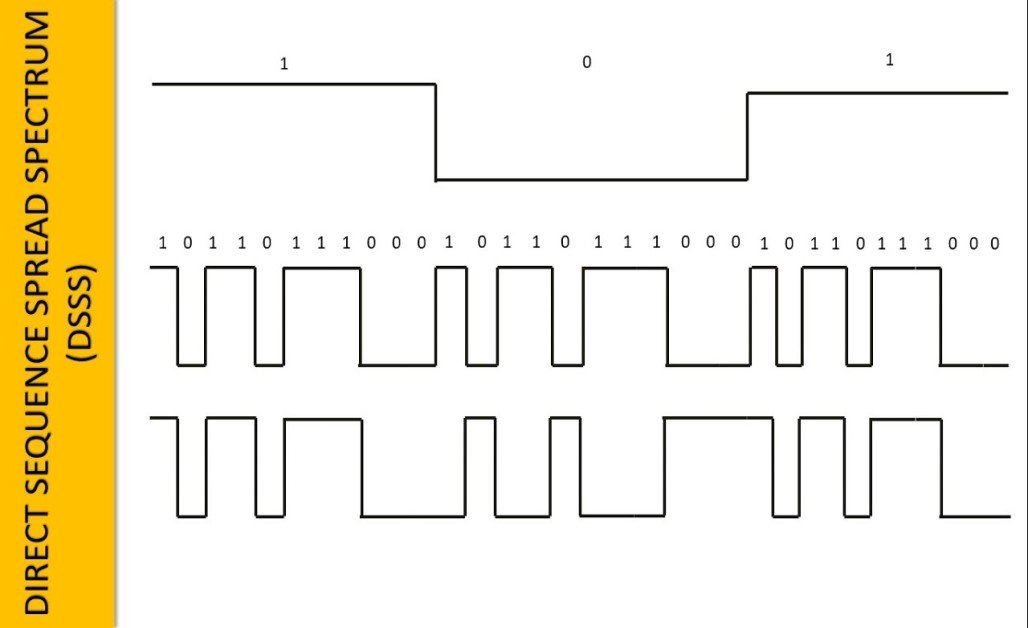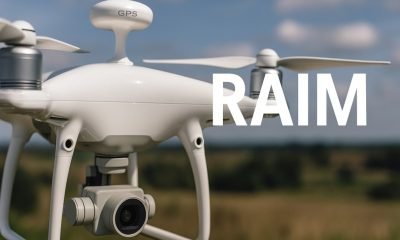- Acronym Guide
- AAM
- ABS
- AC
- ACAS
- ADS-B
- AFAC
- AGL
- AI
- AIM
- ALS
- AM
- AMA
- ANSP
- APPI
- AUV
- AUVSI
- ARPAS-UK
- ASTM
- ATC
- BVLOS
- CAA
- CAAC
- CAB
- CASA
- CATT
- CBO
- CBR
- CBRN
- CDMA
- CDR
- CFR
- COA
- COMINT
- CORS
- COTP
- COTR
- CPTED
- CV
- C2
- DAA
- DEM
- DFI
- DFS
- DGCA
- DHS
- DOD
- DPA
- DPEs
- DRO
- DSM
- DSMX
- DSP
- DSSS
- DTM
- EASA
- EFT
- EO
- EOD
- EO/IR
- ELINT
- EMI
- ESC
- EVLOS
- eVTOLs
- FAA
- FCC
- FCS
- FHSS
- FICCI
- FLIR
- FOB
- FOV
- FPS
- FPV
- GBDAA
- GCP
- GCS
- GDPR
- GNSS
- GPS
- GSD
- GVC
- HDR
- HOGE
- IACRA
- ICAO
- ICS
- IMU
- INS
- IR
- ISA
- ISR
- ITU
- LAAMS
- LAANC
- LAATM
- LAI
- LBA
- LIDAR
- LOS
- LSALT
- MAC
- MAVLink
- MLIT
- MMS
- MSL
- MTOM
- NDAA
- NCSL
- NFZ
- NIST
- NMEA
- NOTAM
- NPA
- NPRM
- NTIA
- OEM
- OFDM
- OOP
- PASM
- PAV
- PCV
- PdM
- PEC
- PIC
- PID
- PIPL
- PLD
- PM
- PN
- PPK
- PPS
- PSM
- PWM
- UAM
- UAOP
- UAS
- UASTM
- UAV
- UCAVs
- UHD
- UHF
- USV
- UTM
- RAIM
- RCC
- RCS
- RFI
- ReOC
- RePL
- RMS
- ROI
- RPAS
- RPC
- RTH
- RTK
- SaR
- SAR
- SARP
- SBAS
- S.Bus
- SEDENA
- SfM
- SFOC
- SIGINT
- SLAM
- SMS
- SORA
- STTR
- sUAS
- TCAS
- TCCA
- TFR
- TIN
- TOF
- TP
- TPS
- TSA
- VHF
- VLOS
- VTOL
Drone Acronyms
What is DSSS (Direct Sequence Spread Spectrum)?
By
Jacob StonerTable Of Contents

Definition
DSSS stands for Direct Sequence Spread Spectrum, a type of spread spectrum modulation technique used in wireless communications to spread the signal over a wider bandwidth. In DSSS, the data signal is multiplied by a pseudorandom noise (PN) code, which expands the signal’s bandwidth. This method makes the transmission more resistant to interference and eavesdropping while improving signal reliability, particularly in environments with high noise or congestion. DSSS is widely used in wireless communication technologies, such as Wi-Fi, GPS, and some radio control systems for drones.
Usage
DSSS is employed in many wireless systems to enhance security, reduce interference, and improve the quality of data transmission. In drone communication, DSSS helps maintain stable connections between the drone and the ground control station by spreading the signal over a broader spectrum. This reduces the chance of interference from other devices operating in the same frequency range, providing a more secure and reliable link.
Relevance to the Industry
DSSS is essential for ensuring robust and secure communications, especially in environments where multiple devices are competing for bandwidth. In the drone industry, DSSS helps mitigate interference from other wireless devices, ensuring that critical control signals are transmitted without disruptions. DSSS is also utilized in Wi-Fi (802.11b), Bluetooth, and GPS technologies, which are commonly integrated into drones for navigation and communication.
How Does Direct Sequence Spread Spectrum (DSSS) Work?
Spreading the Signal Over a Wide Bandwidth:
- Pseudorandom Noise (PN) Code:
- Signal Spreading: In Direct Sequence Spread Spectrum (DSSS), the original data signal is multiplied by a high-rate pseudorandom noise (PN) code, also known as a spreading code. This process spreads the data signal over a much wider bandwidth than the original signal’s bandwidth. The PN code is a sequence of bits generated at a higher frequency than the original signal, which results in the signal being “spread” across a broader frequency spectrum.
- Chipping: Each bit of data is transformed into multiple smaller bits, called chips, using the PN code. This process, known as chipping, creates a signal that occupies more bandwidth than the original narrowband signal. The chipping rate determines how much the signal is spread and enhances the signal’s resilience against interference and jamming.
- Signal Transmission:
- Wideband Signal Transmission: Once the data signal is spread using the PN code, it is transmitted over a wide frequency range. By spreading the signal over a larger portion of the available bandwidth, DSSS reduces the likelihood that interference or noise on any specific frequency will significantly disrupt the transmission. Even if interference occurs on part of the spectrum, the spread nature of the signal ensures that the data can still be successfully received and reconstructed.
- Continuous Transmission: Unlike frequency hopping spread spectrum (FHSS), which hops between different frequencies, DSSS continuously occupies the entire spread spectrum. This results in a more efficient use of the available bandwidth and allows for higher data rates, making DSSS suitable for applications like Wi-Fi and GPS.
Reception and Signal Reconstruction:
- Despreading and Demodulation:
- PN Code Synchronization: At the receiver end, the signal is “de-spread” by multiplying the received wideband signal with the same PN code used during transmission. The receiver must be synchronized with the transmitter to use the exact PN code sequence, ensuring that the original data signal can be accurately recovered.
- Signal Recovery: Once the received signal is multiplied by the PN code, the original narrowband signal is reconstructed, and the noise and interference are significantly reduced. The receiver demodulates the signal to retrieve the original data, which has been shielded from interference by the spreading process.
- Error Detection and Correction:
- Interference Resilience: DSSS enhances error detection and correction by spreading the data over a wide range of frequencies, ensuring that minor disruptions do not significantly affect the entire signal. This makes DSSS highly resistant to interference and noise, particularly in crowded wireless environments.
- Data Integrity: If portions of the signal are lost or affected by noise, the receiver can still reconstruct the original data based on the remaining signal and the PN code, improving overall communication reliability.
Applications and Advantages of DSSS:
- Interference Resistance and Security:
- Noise Immunity: DSSS’s wideband nature allows it to resist interference from narrowband signals, making it particularly useful in environments with heavy wireless traffic. The spreading of the signal ensures that even if part of the spectrum is affected by noise, the signal as a whole remains intelligible.
- Security through Spreading Codes: The use of pseudorandom noise codes adds an element of security to DSSS. Since the PN code is known only to the transmitter and receiver, it is difficult for unauthorized users to intercept or interfere with the signal without knowing the correct code. This feature makes DSSS a suitable choice for secure communications, including military and GPS applications.
- Higher Data Rates in Wireless Communication:
- Wi-Fi (802.11b) and Other Applications: DSSS is the foundational technology behind the IEEE 802.11b Wi-Fi standard, which operates in the 2.4 GHz frequency band. By spreading the signal, DSSS supports higher data rates and more reliable wireless communication, particularly in environments prone to interference.
- GPS and Navigation Systems: DSSS is also used in GPS systems, where its resistance to interference ensures that satellite signals can be accurately received even in noisy environments. The wideband signal helps maintain accurate positioning information even when other wireless signals are present.
Technical Considerations:
- Processing Gain and Bandwidth Efficiency:
- Processing Gain: The key advantage of DSSS lies in its processing gain, which is the ratio of the spread signal bandwidth to the original signal bandwidth. The higher the processing gain, the more resistant the signal is to interference and jamming, as the spread signal appears as low-power noise to other receivers.
- Trade-Off Between Bandwidth and Power: While DSSS improves noise resistance and security, it requires more bandwidth than other narrowband communication methods. This trade-off is often acceptable in applications where bandwidth is available, but it may not be suitable for environments where bandwidth is limited.
By spreading the data signal over a wide bandwidth and using a pseudorandom noise code, Direct Sequence Spread Spectrum (DSSS) offers superior interference resistance, enhanced security, and high data rates, making it ideal for applications like Wi-Fi, GPS, and secure communications.
Example in Use
“The drone’s communication system uses Direct Sequence Spread Spectrum (DSSS) to maintain a stable connection by spreading the signal over a wide frequency range, minimizing interference from nearby wireless devices.”
Frequently Asked Questions about DSSS (Direct Sequence Spread Spectrum)
1. How does DSSS improve communication reliability?
Answer: Direct Sequence Spread Spectrum improves communication reliability by:
- Spreading the Signal: The data signal is spread across a wide range of frequencies, which reduces the impact of interference on any single frequency.
- Noise Resistance: The use of a pseudorandom noise (PN) code makes the signal more resistant to interference and noise, improving the quality of the transmission.
2. What are the advantages of DSSS over FHSS?
Answer: The advantages of Direct Sequence Spread Spectrum over FHSS include:
- Continuous Spectrum Use: Unlike FHSS, which hops between frequencies, DSSS uses the entire bandwidth continuously, making it more efficient for high-data-rate applications.
- Higher Data Rates: DSSS systems generally support higher data transmission rates, making them ideal for applications like Wi-Fi (802.11b).
3. What are the common applications of DSSS?
Answer: Direct Sequence Spread Spectrum is commonly used in:
- Wi-Fi (802.11b): DSSS is the foundation of the 802.11b Wi-Fi standard, providing reliable wireless communication in crowded environments.
- GPS Systems: DSSS is used in GPS to spread signals over a wide frequency range, improving accuracy and resistance to interference.
For examples of these acronyms visit our Industries page.
As the CEO of Flyeye.io, Jacob Stoner spearheads the company's operations with his extensive expertise in the drone industry. He is a licensed commercial drone operator in Canada, where he frequently conducts drone inspections. Jacob is a highly respected figure within his local drone community, where he indulges his passion for videography during his leisure time. Above all, Jacob's keen interest lies in the potential societal impact of drone technology advancements.











